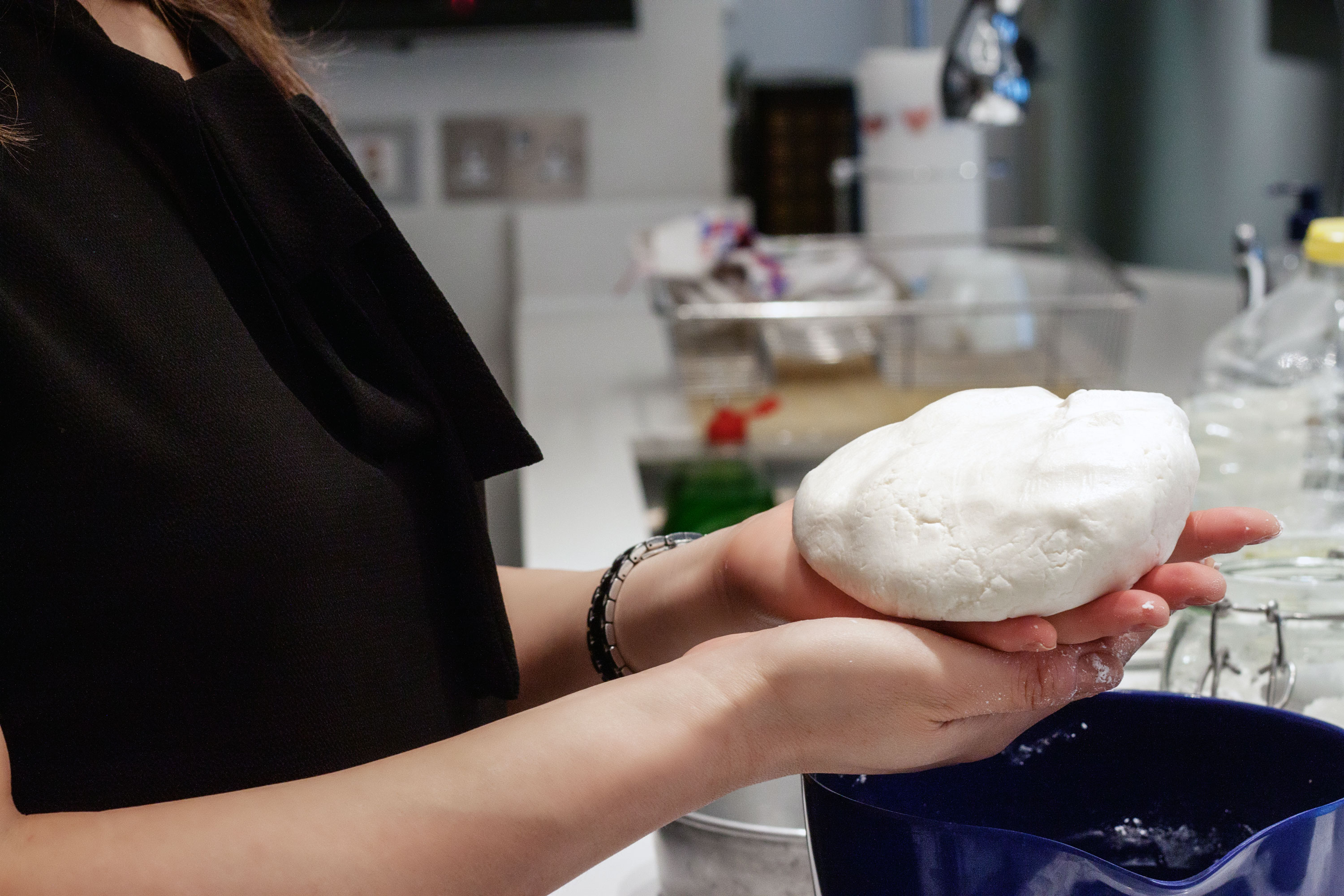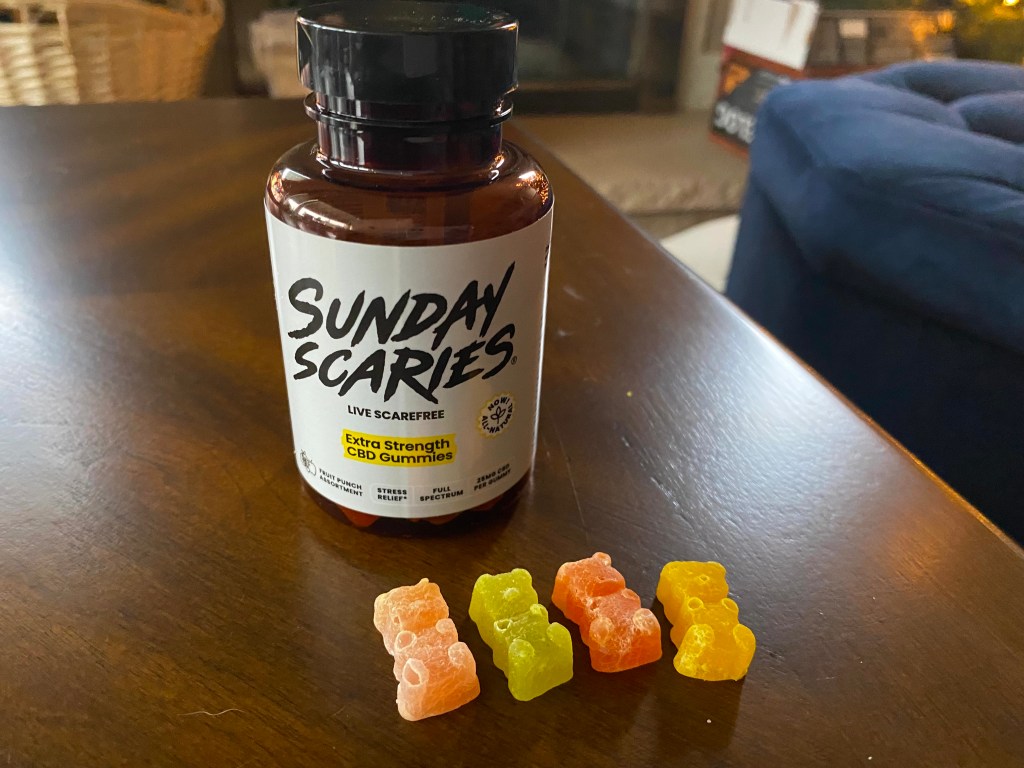If you spent any time eating school dinners in the UK in the 1980s, then you’ll have learned early that texture is a low priority consideration in most British dishes. We’re getting better, but for a long time, the only two textures worth noting in our nation’s cuisine were “sloppy” and “tough”—neither for good reasons.
“We don’t really have a vocabulary for texture,” agrees Vivien Wong. “Asian food is very much about texture as well as taste but here in the UK, we don’t really focus on texture. In Asia, we’ll add things to our food purely for their texture. There are certain things you’ll add that don’t taste of anything, but have a great feel. That’s what we like.”
Videos by VICE
Wong grew up with mochi, the Japanese rice cake. Her parents ran a bakery business and made Asian cakes and confectionary, including traditional Japanese mochi with red bean paste. After seeing mochi filled with ice cream on a trip to New York with her brother Howard, Wong realised she could bring the idea here and introduce texture-prudish British mouths to the Asian sweet treat.

Vivien Wong, co-founder of Little Moons, a London-based mochi business. All photos by the author.
The pair set up Little Moons and now sell Japanese mochi balls filled with ice cream online and at several London retailers.
“Mochi has a really chewy mouthfeel that we call ‘Q texture.’ There’s really nothing like it in English cooking,” explains Wong. “It’s sort of a gummy bear texture. When people first try them with red bean paste, it can be a bit much. But with ice cream, which is more familiar, people think it’s weird, but they find that they like it.”
I’m here to find out how to make mochi and to understand more about Q texture in the process. The recipe is surprisingly simple: rice flour, sugar, and water. Wong makes a simple dough and let’s me prod at it.

The rice flour mochi dough before steaming.
“It’s not very sticky,” she notes. “It’s almost like play dough. And not chewy at all.”
It’s tearable—very different to a dough you might make for bread with wheat flour. Wong presses it in an oiled round tin and sets it on a trestle in a wok filled with water. She then pops a lid on to let the dough steam.
While we wait, she tells me a story.
“There’s a rabbit pounding mochi on the moon … ” she begins.
The way we’re making mochi is by steaming the rice flour dough, but it can also be done by cooking the rice and pounding it. This usually takes two people—one to hit the dough with a giant pestle-like baton and the other to pull it flat with their hands in between blows. This is done with gusto and takes great skill on the part of the dough-puller not to get their fingers smashed in.
At New Year in Japan, crowds of people traditionally gather to watch the pounding of mochi and to hear the tale of the mochi-pounding rabbit.
Wong continues with the story: “A god came to the earth dressed as a beggar. He found a fox, a monkey, and a rabbit and said, ‘I’m really hungry. Can you help me?’ The fox fetched wood to build a fire. The monkey collected nuts and berries for the beggar to eat. But the rabbit felt there was nothing useful he could do, so he threw himself onto the fire as a sacrifice for to eat. The beggar revealed himself as a god and was so pleased with the bunny’s selflessness, that he brought him back to life, revered him, and set him on the moon as a symbol.”
“The story’s a bit gruesome,” she admits, “but that’s why there’s a story of a mochi-pounding rabbit on the moon. It’s one of those things that’s special because the texture is so amazing, and because there’s a whole ceremony around making it. Plus it’s nutritious because it’s made with rice.”

The mochi dough after steaming.
Our mochi dough has fully steamed during the telling of this tale. Wong lifts it out and it’s clear a dramatic change has happened, thanks to the heat and water. The dough we started with was matt white and had very little elasticity. Now it’s a creamy ivory colour; slick and glossy looking and swollen. “Squidgy” is really the only word I have for the feel of it. Prodding it feels similar to the chub of a baby’s tummy.

Cutting the dough into pieces for rolling.

While the dough is still warm, we roll it into thin circles to fill with ice cream and make into dumplings.
“When it cools down, it goes hard, so you have to get it while it’s still warm enough to be malleable, but cool enough not to melt the ice cream when you wrap it,” Wang explains.

Filling the mochi balls with ice cream.
In other words, there’s a knack to this, and I can tell you, it’s not one I’ve got. I won’t be getting deified as a mochi-rolling bunny any time soon. Rolling the dough is tough. It doesn’t give the same way as pastry might. It’s not exactly rubbery, but it does feel like it has that kind of elasticity.
Wong and her brother worked hard to perfect their dough recipe so it would work with ice cream.
“When you’re filling mochi with red bean paste, which has a similar ambient temperature, it’s very different to filling it with something that’s frozen,” she says. “The dough has to stay soft even when it’s frozen, so though the fundamentals are the same as our parents’ recipe, it took us about two years to get the ice cream mochi right.”

After engaging my core, pushing quite hard, and breaking a small sweat, I manage to get my dough thin enough. I cut a circle, pop in a blob of ice cream, and try to fold the whole thing shut like a dumpling without dribbling melted ice cream down my hands. I’d say I’m about 80 percent successful, but as far as Wong is concerned, that’s all part of it.
“You’re basically eating ice cream with your fingers, which is a bit childlike, a bit naughty, a bit messy, and not very proper. I think that’s what makes them fun.”
She’s right, mochi balls are fun to eat. Like when you bite into what my mum calls “rippy-chewy” sweets, they stretch and then snap—but without the snap. I bite through the chewy bit into the ice cream, and tugging the dough away almost pulls it closed again around the ice cream. It’s a really addictive sensation.

Podgy like a baby, chewier than a rippy-chewy sweet, stretchy but not like caramel, more-ish because of the sensation, rather than the taste—I don’t really have the vocabulary to describe the feel of mochi. Some kind of magic transformed water, rice flour, and sugar into this delight.
Whatever gives mochi its Q texture, I decide it must be the work of the moon bunny, bestowing Q-iness on the world to make us happy.
More
From VICE
-

Photo: Alina Rudya/Bell Collective / Getty Images -

-

-

